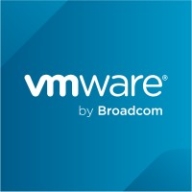

Zesty and VMware Tanzu Platform compete in cloud infrastructure management, with VMware Tanzu having a noticeable advantage due to its comprehensive feature set, which many find worth the higher price.
Features: Zesty offers automation, cost optimization, and active cloud resource management, enhancing efficiency. VMware Tanzu Platform provides seamless integration with enterprise systems, container management, and Kubernetes capabilities, catering to large-scale deployments.
Ease of Deployment and Customer Service: Zesty is known for easy deployment and solid customer support, ideal for straightforward setups. VMware Tanzu Platform, while more complex, ensures smooth transitions with extensive customer service for advanced infrastructure needs.
Pricing and ROI: Zesty features competitive pricing and quick ROI, appealing to businesses prioritizing immediate cost savings. VMware Tanzu Platform, despite higher initial costs, offers long-term ROI with its extensive functionalities, suitable for comprehensive cloud management solutions.
| Product | Market Share (%) |
|---|---|
| VMware Tanzu Platform | 1.1% |
| Zesty | 0.5% |
| Other | 98.4% |


| Company Size | Count |
|---|---|
| Small Business | 10 |
| Midsize Enterprise | 3 |
| Large Enterprise | 10 |
VMware Tanzu Platform is designed for cloud-native development and management of Kubernetes, CI/CD processes, microservices, and containerized workloads. It supports deployments both on cloud and on-premises, providing centralized management via Mission Control.
VMware Tanzu Platform offers seamless integration with vSphere, ESX, and vSAN, supporting centralized cluster management and lifecycle management. The platform provides a GUI for monitoring CI/CD pipelines and network policies, enhancing multi-tenancy and Day 2 operations. Users can easily manage Kubernetes clusters, monitor applications, and integrate with tools such as GitHub, GitLab, Cloud Foundry, and Azure. It ensures compliance and security for service providers, financial institutions, and businesses.
What are the key features of VMware Tanzu Platform?
What benefits and ROI should users look for in VMware Tanzu Platform reviews?
Industries such as financial institutions, service providers, and businesses requiring rigorous compliance and security deploy VMware Tanzu Platform. These entities benefit from centralized management, streamlined DevOps processes, and integrated tools, enhancing their capabilities in cloud-native developments and containerized workloads.
Zesty offers scalable solutions that empower businesses to optimize their digital presence efficiently. Designed for dynamic online environments, Zesty integrates seamlessly, enhancing digital content management with versatile tools.
Zesty focuses on providing an adaptive content management experience for professionals seeking optimization in web content publishing. Known for its intuitive interfaces and robust architecture, Zesty allows effortless website management, content personalization, and SEO enhancements. With Zesty, businesses can efficiently curate digital content, ensuring swift loading times and superior user engagement. Its extensible features enable integration across different platforms, ensuring streamlined workflow management and enhanced data-driven decision-making.
What are the key features of Zesty?Industries such as eCommerce, healthcare, and media have successfully implemented Zesty to streamline digital operations. For eCommerce, Zesty facilitates rapid product content updates, while healthcare sectors utilize it for managing patient information and media outlets employ it for real-time news publishing.
We monitor all Cloud Management reviews to prevent fraudulent reviews and keep review quality high. We do not post reviews by company employees or direct competitors. We validate each review for authenticity via cross-reference with LinkedIn, and personal follow-up with the reviewer when necessary.